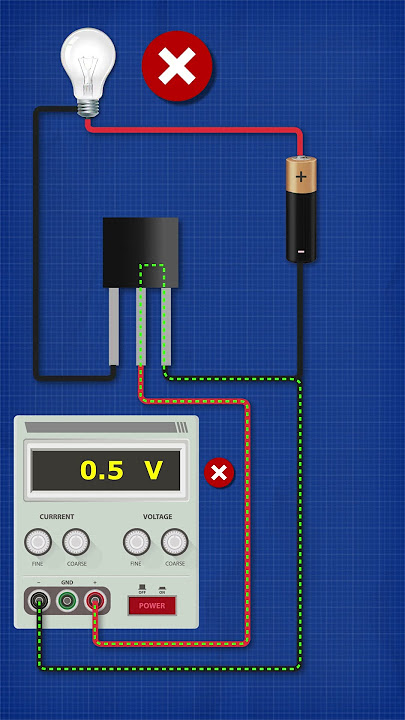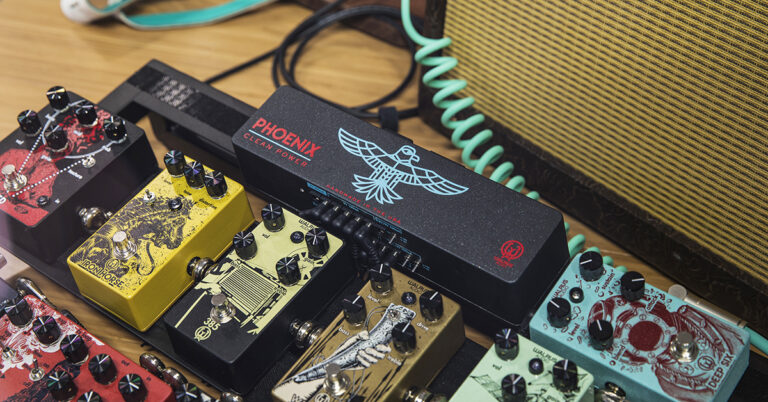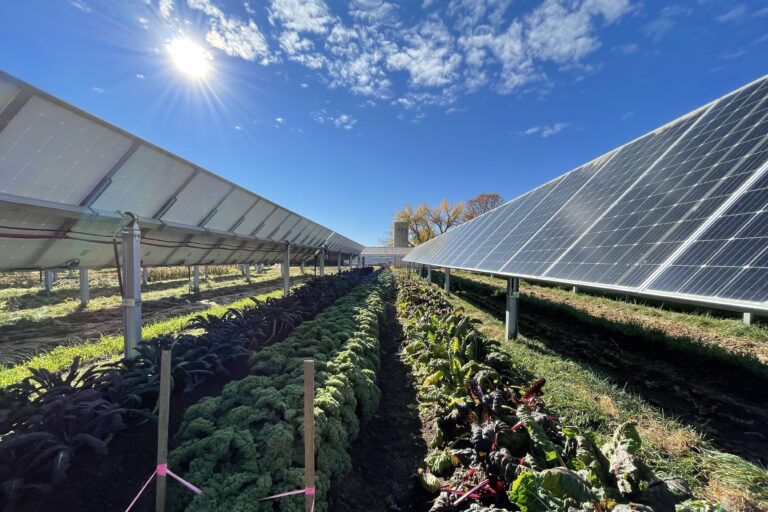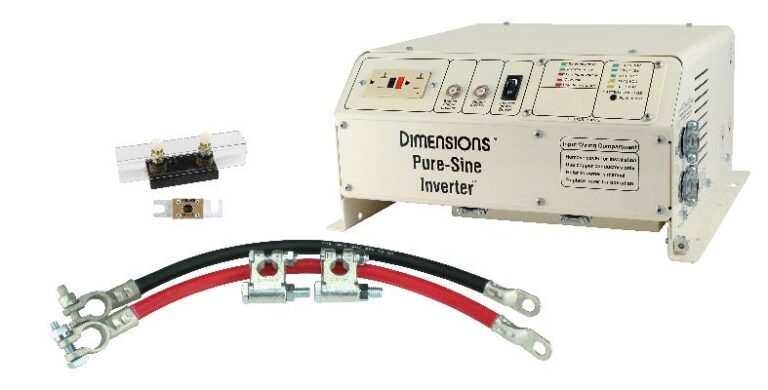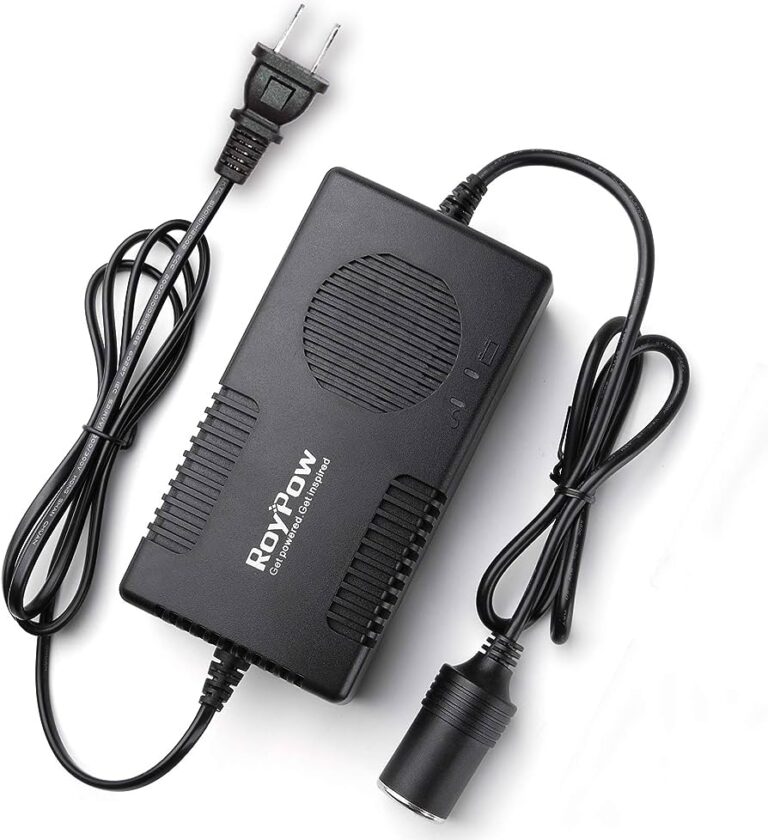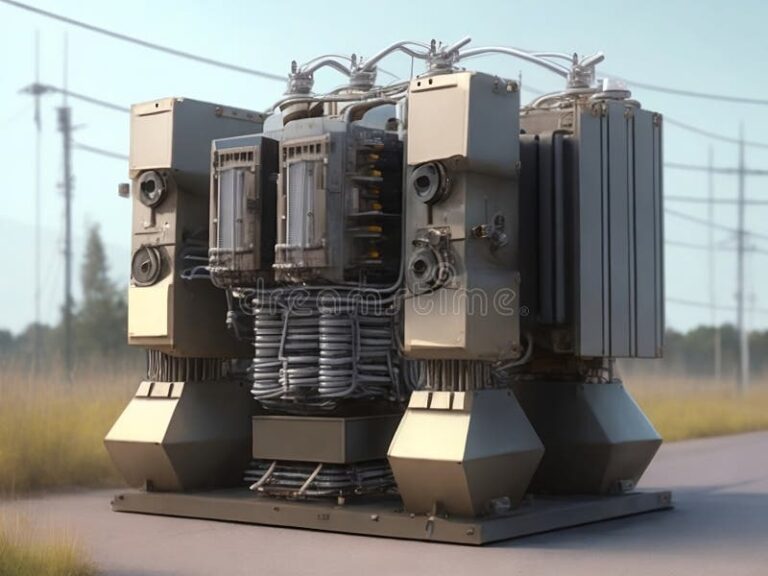How Does an RV Inverter Work? Unraveling the Secrets of Power Conversion
An RV inverter works by converting DC power from the battery into AC power for appliances. The inverter transforms the voltage to match the needs of the devices, allowing them to operate on the RV’s battery power.
By converting DC to AC, the inverter enables you to use household appliances and electronics while off-grid or when the RV is not connected to shore power. It ensures a steady power supply, providing convenience and comfort during camping trips or travel adventures.
With an RV inverter, you can enjoy the comforts of home wherever you go, powering your devices and appliances with ease.
What Is An Rv Inverter And Why Is It Important?
An RV inverter is an essential component that allows you to convert DC power from your RV’s battery into AC power for your appliances and electronics. It works by changing the current from a direct flow to an alternating flow, ensuring a steady power supply while you’re on the road.
Definition And Purpose Of An Rv Inverter
An RV inverter is a device that converts the DC (Direct Current) power generated by an RV’s battery into AC (Alternating Current) power, allowing you to use standard household appliances and electronics while on the road. It serves as a bridge between your RV’s battery system and the electrical devices you want to power.
Bullet points:
- Converts DC power from the RV’s battery to AC power
- Enables the use of standard household appliances and electronics in the RV
Importance Of Power Conversion In An Rv
Ensuring the proper power conversion in an RV is crucial for several reasons. Here’s why it’s important:
- Compatibility: Many appliances and electronics run on AC power, so having an RV inverter allows you to use them seamlessly in your vehicle.
- Convenience: With an RV inverter, you can power devices like microwaves, laptops, and televisions, bringing the comforts of home with you on your travels.
- Independence: By converting DC power from the RV’s battery, an inverter allows you to rely less on campground hookups or generators, giving you the freedom to stay off-grid for longer periods.
- Flexibility: Having an RV inverter gives you the flexibility to charge your electronics, run appliances, and use other power-dependent devices wherever you are, be it in a remote camping spot or a bustling park.
- Emergency preparedness: In case of a power outage or emergency, an RV inverter can serve as a backup power source, providing you with essential electricity for lighting, refrigeration, or medical devices.
Remember, an RV inverter is not only a power converter but also an essential component that enhances your RV experience by providing convenience, flexibility, and peace of mind.
How Does An Rv Inverter Work?
An RV inverter works by converting DC power from the battery to AC power for household appliances, allowing you to use them even when not connected to shore power. It provides a seamless power supply to run electrical devices while on the road.
RV inverters are essential devices that help convert the DC power from your battery into usable AC power for your electrical appliances. If you’ve ever wondered how an RV inverter works, you’re not alone. In this section, we’ll provide an overview of the power conversion process, explain the input and output voltages, and explore the role of inverter circuits.
Overview Of The Power Conversion Process:
- The RV inverter acts as a bridge between your battery and the electrical devices that require AC power.
- It converts the direct current (DC) power from your battery into alternating current (AC) power, which is what most household appliances operate on.
- The inverter follows a sequential process that involves converting the DC power into high-frequency AC power, and then transforming it into a more stable and suitable form for appliances to use.
Input And Output Voltage Explanation:
- In an RV inverter, the input voltage refers to the DC power that flows from your battery into the inverter.
- The output voltage, on the other hand, is the AC power that the inverter generates, allowing you to power various appliances in your RV.
- RV inverters typically have different output voltage options, such as 120V or 240V, depending on your specific power requirements.
Providing Ac Power From Dc Battery:
- One of the primary functions of an RV inverter is to provide AC power from a DC battery source, allowing you to use standard household appliances in your RV.
- Once the DC power from the battery is converted into AC power, it is available for use by devices like TVs, microwaves, air conditioners, and more.
- This capability enables you to enjoy the comforts of home while traveling on the road.
Role Of Inverter Circuits:
- Inverter circuits play a crucial role in the functioning of RV inverters.
- These circuits consist of semiconductor devices, such as transistors, that help control the flow of electrical current through the inverter.
- By using a combination of switches and passive components like capacitors and inductors, inverter circuits convert DC power into AC power through a process called pulse width modulation (PWM).
- PWM involves rapidly switching the DC power on and off to mimic the waveform of AC power.
Understanding how an RV inverter works is essential for anyone looking to power their appliances while on the move. By converting DC power from your battery into AC power, the inverter ensures you can enjoy all the conveniences of home when camping or traveling in your RV.
The input and output voltage explanations, as well as the role of inverter circuits, provide a comprehensive understanding of the inner workings of an RV inverter.
Types Of Rv Inverters
RV inverters come in various types and they work by converting direct current (DC) power to alternating current (AC) power, allowing you to power appliances and devices while on the road. They are essential for providing electricity in your RV, ensuring convenience and comfort during your travels.
RV inverters are essential devices that allow you to power your electronic appliances and devices while on the road. These devices convert the DC power from your RV’s batteries into AC power, ensuring that your electrical devices can operate efficiently.
There are two main types of RV inverters: the Modified Sine Wave Inverter and the Pure Sine Wave Inverter. Let’s take a closer look at each type and explore their pros and cons.
Modified Sine Wave Inverter:
- This type of inverter is the more affordable option compared to the pure sine wave inverter.
- It produces a modified sine waveform that approximates a sine wave but contains some distortion.
- Modified sine wave inverters can efficiently power basic electronics, such as lights, fans, and certain appliances.
- They are suitable for RV owners on a budget who don’t need to power delicate or sensitive electronics.
- Pros:
- Cost-effective option
- Supports basic electrical devices
Pure Sine Wave Inverter:
- This type of inverter is the more advanced and expensive option.
- It provides a smooth and clean sine waveform, identical to the power supplied by the grid.
- Pure sine wave inverters can power all types of devices, including sensitive electronics like laptops, TVs, and refrigerators.
- They offer a higher level of performance and efficiency, ensuring that your devices operate smoothly without any interference or damage.
- Pros:
- Suitable for all electronic devices, including sensitive ones
- Provides clean and stable power output
Both the modified sine wave inverter and the pure sine wave inverter have their own advantages and disadvantages. While the modified sine wave inverter is a more cost-effective choice for basic electrical needs, the pure sine wave inverter offers superior performance and compatibility with all types of devices.
Consider your specific power requirements and budget before choosing the right RV inverter for your needs.
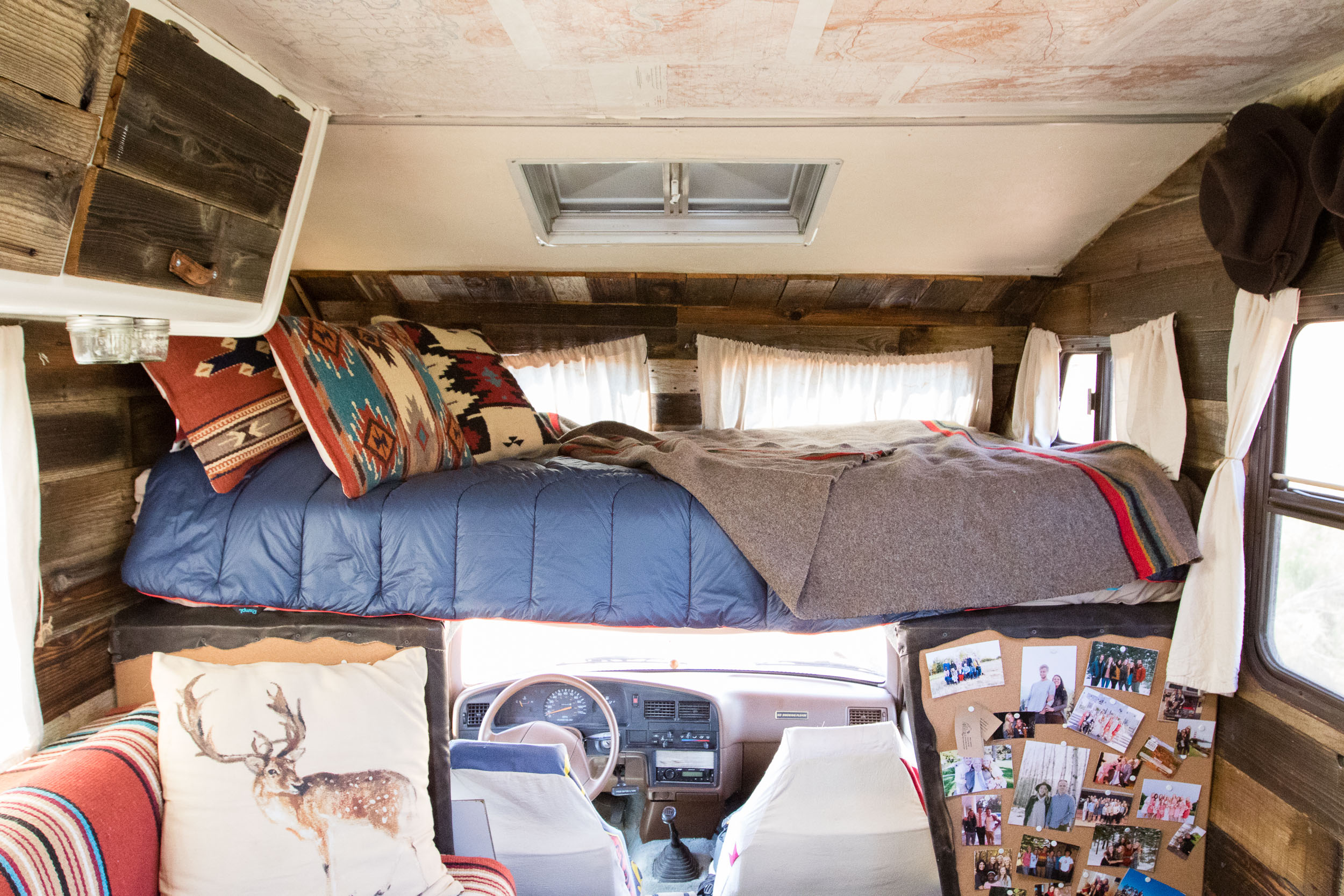
Credit: ourvie.com
Installing An Rv Inverter
An RV inverter is essential for converting DC power from the battery to AC power for appliances. It works by utilizing electronic components to change the voltage, providing a seamless power source on the road.
Choosing The Right Inverter For Your Rv:
- Start by determining your power needs: Calculate the total wattage of all the appliances and devices you plan to run simultaneously in your RV. This will help you choose an inverter with the appropriate power capacity.
- Consider the inverter type: There are two common types of RV inverters – modified sine wave and pure sine wave. Pure sine wave inverters are more expensive but produce a cleaner and more consistent power output, making them ideal for sensitive electronic devices.
- Assess the inverter’s power capacity: Look for an inverter that can handle the maximum power load of your RV. It’s recommended to choose an inverter with a capacity slightly higher than your calculated wattage to accommodate power spikes.
- Check the inverter’s dimensions and weight: Ensure that the inverter can be easily installed in your RV and doesn’t add excessive weight to your vehicle.
- Consider additional features: Some inverters offer built-in surge protection, remote control capabilities, or automatic transfer switches. Evaluate whether these features are necessary for your specific needs and budget.
Wiring The Inverter To The Rv’S Electrical System:
- Locate a suitable installation spot: Find a secure, dry, and well-ventilated area in your RV to mount the inverter. It should be easily accessible for future maintenance.
- Disconnect the RV from the power source: Before beginning the wiring process, disconnect the RV from any external power sources to ensure safety.
- Remove the negative battery cable: Detach the negative battery cable from the RV’s battery to prevent any electrical hazards during the installation process.
- Follow the manufacturer’s instructions: Refer to the inverter’s user manual for specific wiring instructions. Connect the inverter’s positive and negative cables to the RV’s electrical system, ensuring proper polarity.
- Secure the wiring: Use suitable cable ties or clamps to secure and organize the wiring, preventing any potential hazards or damage.
- Test the inverter: After the installation, double-check all connections and perform a thorough test to ensure the inverter is functioning correctly.
Ensuring Proper Ventilation And Cooling:
- Choose an appropriate location: Install the inverter in an area with sufficient airflow to prevent overheating. Avoid placing it in a confined space or near heat-emitting devices.
- Provide clearance: The inverter’s installation spot should have enough space around it for proper heat dissipation. Refer to the manufacturer’s guidelines for the recommended clearance.
- Install ventilation fans: If necessary, consider installing additional ventilation fans to enhance airflow and keep the inverter cool during operation.
- Regular maintenance: Periodically clean the inverter’s vents and fans to remove dust and debris that could obstruct airflow. This will help maintain optimal performance and prevent overheating.
Remember to consider your specific RV’s electrical system requirements and consult a professional if needed during the installation process. Following these guidelines will ensure the safe and efficient operation of your RV inverter.
Operating An Rv Inverter
An RV inverter allows you to power your appliances and devices while on the road. It works by converting the DC power from your RV’s battery into AC power that can be used by your electronics. With an inverter, you can enjoy the comforts of home even when you’re off the grid.
Learning how to use and control the inverter:
- Familiarize yourself with the inverter’s control panel and switches, typically located in the RV’s electrical compartment.
- Turn on the inverter by switching it from “off” to “on” position. Ensure that the batteries are fully charged.
- Connect the RV’s electrical devices to the inverter’s AC outlets or power sockets.
- Use the inverter’s control panel to monitor and adjust the power output based on your requirements.
- Take note of the inverter’s safety features, such as automatic shut-off during low battery voltage or overload situations.
Understanding power capacity and limitations:
- Determine the inverter’s power capacity, usually measured in watts. Choose an inverter that can handle the total power load of your RV’s electrical devices.
- Be aware of the inverter’s limitations, including peak power output and continuous power capacity. Exceeding these limits can lead to malfunctions or even damage.
- Prioritize your power usage to avoid overloading the inverter. Consider the power demands of each device and avoid running them simultaneously if it exceeds the inverter’s capacity.
Common troubleshooting tips:
- If the inverter fails to power your devices, first check the battery connections and ensure they are properly secured.
- In case of persistent issues, examine the inverter’s fuses and circuit breakers. Replace any blown fuses or reset the circuit breakers as needed.
- Monitor the battery charge level, as low voltage can affect the inverter’s performance. Recharge the batteries or consider investing in a solar panel system for extended power supply.
- Make sure the inverter is well-ventilated to prevent overheating. Keep it away from direct sunlight and maintain proper airflow in the compartment.
- Occasionally clean the inverter to remove dust or debris that may interfere with its operation.
By following these guidelines, you can make the most of your RV inverter and enjoy reliable and efficient power supply during your travels. Remember to always refer to the manufacturer’s instructions and seek professional assistance if required.
Energy Saving Tips For Rv Inverters
RV inverters are essential for converting DC power from your RV’s batteries to AC power for household appliances. They work by switching the power source and saving energy by running on battery power instead of the generator. Follow these energy-saving tips to maximize the efficiency of your RV inverter.
RV inverters play a crucial role in providing electricity while you’re on the road. To ensure optimal performance and maximize energy efficiency, follow these energy-saving tips for your RV inverter:
Proper Battery Maintenance And Charging
- Regularly inspect and clean your RV battery terminals to prevent corrosion and ensure a reliable electrical connection.
- Monitor the battery voltage regularly using a voltmeter to identify any potential issues.
- Charge your RV batteries fully before your trip to maximize their capacity. Disconnect any appliances or devices that may drain the battery while charging.
- Consider investing in a smart charger to ensure safe and efficient charging, as it can adjust the charging rate based on battery condition.
Efficient Use Of Power-Hungry Appliances
- Be mindful of the power consumption of your appliances and avoid running them simultaneously to prevent overloading the inverter.
- Opt for energy-efficient appliances such as LED lights, which use significantly less power than traditional incandescent bulbs.
- Use low-power alternatives when available, such as electric fans instead of air conditioning, to reduce your electricity usage.
- Unplug any devices or appliances that are not in use, as they can still draw power in standby mode.
Maximizing Solar Power Input
- Position your RV to maximize solar panel exposure to sunlight, ensuring optimal charging efficiency.
- Clean your solar panels regularly to remove any dirt or debris that may obstruct sunlight absorption.
- Monitor solar panel output regularly to detect any potential issues, such as shading or reduced efficiency due to damage.
- Consider investing in a solar charge controller to regulate the amount of power going to your RV batteries, preventing overcharging and optimizing energy usage.
By following these energy-saving tips, you can ensure that your RV inverter operates efficiently, allowing you to enjoy your adventures on the road while minimizing your energy consumption and maintaining optimal battery performance.
Adding Battery Backup To Your Rv Inverter System
An RV inverter system with added battery backup ensures uninterrupted power supply for your recreational vehicle. Discover how an RV inverter works and the benefits of incorporating battery backup into your system.
RV inverters are essential for powering appliances and electronics while on the road. But what if you could enhance your RV’s power system even further by adding a battery backup? In this section, we’ll explore the benefits of a battery backup system for your RV inverter and the steps to integrate it seamlessly into your setup.
By doing so, you can reduce reliance on external power sources and enjoy a more reliable and independent power supply.
Benefits Of A Battery Backup System:
- Uninterrupted power supply: A battery backup system ensures uninterrupted power even when you’re not connected to an external power source. This means you can continue using your appliances and devices smoothly, even during power outages or while camping in remote locations.
- Added flexibility: With a battery backup, you have the flexibility to use your RV’s power system on-the-go without worrying about finding a reliable power hookup. You can enjoy boondocking or dry camping experiences with ease, knowing that you have a backup power source.
- Increased peace of mind: Knowing you have a battery backup system in place gives you peace of mind, especially during emergencies or when you need to use essential devices like medical equipment. It ensures that you’re prepared for any unexpected situations that may arise during your travels.
Steps To Integrate A Battery Backup:
- Assess power needs: Determine your RV’s power requirements to calculate the size and type of battery backup system you need. Consider the power draw of your appliances, devices, and other equipment you want to run on battery power.
- Choose the right batteries: Select deep-cycle batteries designed for RV use. These batteries are designed to consistently provide power over an extended period. Consider factors like battery capacity, amp-hours, and maintenance requirements.
- Install the battery bank: Find a suitable location within your RV to install the battery bank. Ensure that it is secure, well-ventilated, and easily accessible. Follow the manufacturer’s instructions and safety guidelines during installation.
- Connect the battery bank to the inverter: Depending on your RV’s existing inverter system, you may need to make some modifications to connect the battery bank. Consult the user manual or seek professional help to ensure proper wiring and connections.
- Test the system: After installation, test the battery backup system to ensure it is functioning as expected. Monitor battery levels and verify that the power is being supplied seamlessly to your appliances and devices.
- Regular maintenance: To keep the battery backup system in optimal condition, perform regular maintenance tasks such as checking battery levels, cleaning terminals, and ensuring proper charging. Follow the manufacturer’s guidelines and safety precautions.
Reducing Reliance On External Power Sources:
- Energy independence: By incorporating a battery backup system, you reduce reliance on external power sources, such as electrical hookups or generators. This allows you to enjoy more freedom and flexibility in choosing your destinations.
- Cost savings: With a battery backup, you can limit the use of external power sources, which can lead to significant cost savings over time. You can avoid campground fees or fuel expenses associated with running a generator for extended periods.
- Environmental friendliness: Minimizing dependency on external power sources reduces your carbon footprint. By using battery power, you contribute to a cleaner and greener environment, promoting sustainable RVing practices.
By adding a battery backup system to your RV inverter, you can enjoy a more reliable, flexible, and independent power supply. Whether you’re boondocking or facing a power outage, having a battery backup ensures uninterrupted power for your appliances and devices.
It’s a valuable investment that enhances your RV experience and provides peace of mind during your travels. So, take the necessary steps to integrate a battery backup system and embrace the benefits of an enhanced power setup for your RV.
Frequently Asked Questions On How Does An Rv Inverter Work
Should I Leave My Rv Inverter On All The Time?
It’s not necessary to leave your RV inverter on all the time.
How Does An Inverter On A Rv Work?
An RV inverter converts battery power into usable electricity for appliances in your RV.
What Runs Off Rv Inverter?
The RV inverter powers appliances like TVs, microwaves, and charging devices when you’re off the grid.
Does The Inverter Charge The Battery In An Rv?
Yes, the inverter can charge the battery in an RV.
Conclusion
Understanding how an RV inverter works is essential for any RV owner. It allows for the conversion of DC power from the batteries into AC power, enabling the use of appliances on the go. By utilizing a complex electronic process, the inverter takes the battery’s low voltage and transforms it to a higher voltage suitable for running household devices.
It provides convenience and flexibility, allowing RV owners to power their electronic devices and appliances wherever they are without relying on external power sources. As the demand for off-grid living and traveling continues to rise, having a reliable and efficient RV inverter becomes even more crucial.
So, whether you’re planning a road trip or living the full-time RV lifestyle, understanding how an RV inverter works is essential knowledge to ensure a comfortable and convenient experience.

